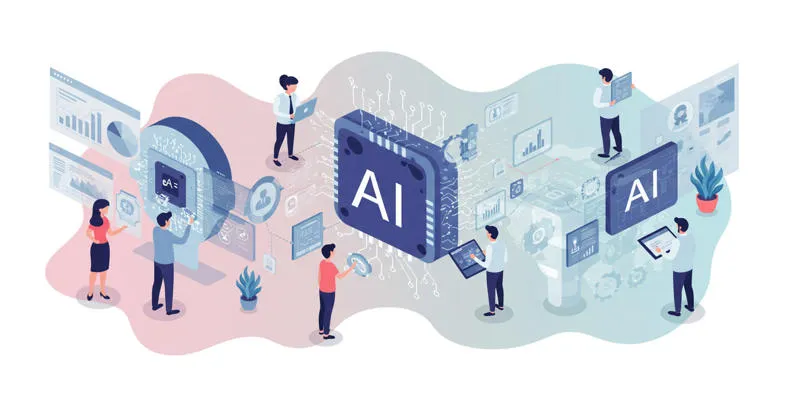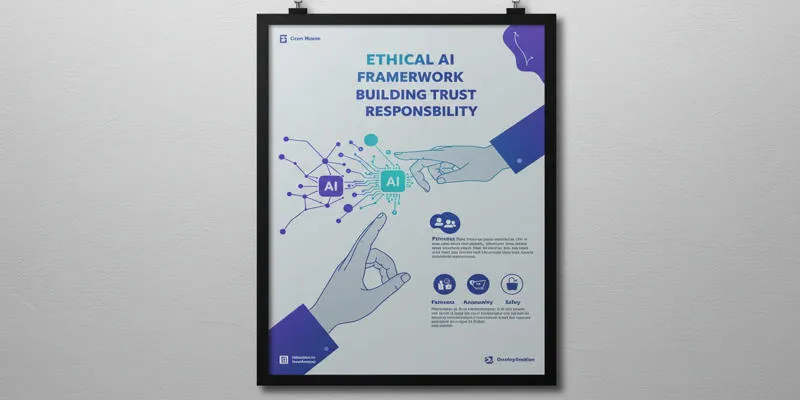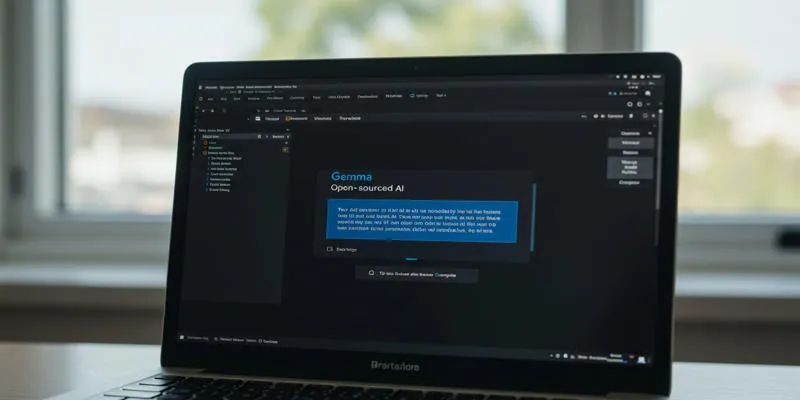Businesses are increasingly leveraging artificial intelligence (AI) to enhance decision-making, boost operational efficiency, and foster innovation. However, many organizations encounter significant challenges during large-scale AI implementations. This article explores these unique barriers and offers practical solutions to help organizations effectively integrate AI into their operations.
The Promise and Challenges of Enterprise AI Adoption
Enterprises are showing a growing interest in adopting AI systems, with expert predictions indicating that spending on generative AI technology will exceed $200 billion over the next five years. Companies are incorporating AI into customer support systems, predictive data analysis, and supply chain optimization tools. However, the path to successful implementation presents several hurdles.

1. Data Integration Challenges
Problem:
One of the biggest challenges in enterprise AI adoption is the integration of data from multiple, disparate sources. Many organizations struggle to manage unstandardized data across separate databases, resulting in disconnected data pipelines, inaccurate predictions, and poor decision-making outcomes.
Solution:
To overcome data integration challenges:
- Adopt a product-focused approach to data management, ensuring quality and accessibility from creation to the end of its lifecycle.
- Utilize advanced tools, such as cloud-based platforms and data lakes, to centralize data storage and processing.
- Implement standardized mapping protocols to clean and enrich data consistently across the organization.
2. Talent Gap in AI Expertise
Problem:
The complexity of AI models necessitates specialized technical personnel for development, maintenance, and problem resolution. Many organizations (69%) report difficulties finding qualified AI professionals, leading to project delays and reliance on external service providers.
Solution:
To address the talent gap:
- Conduct internal AI training programs to build the necessary skills within the existing workforce.
- Collaborate with academic institutions to access skilled personnel and participate in emerging AI research projects.
- Utilize platforms like Appian for simplified development of AI-powered applications through non-technical interfaces.
3. Ethical Concerns and Compliance Issues
Problem:
AI systems can raise ethical concerns, including biased algorithms, privacy issues, and intellectual property disputes. Different regional standards further complicate implementation, with compliance requirements such as GDPR or HIPAA causing delays.
Solution:
To navigate ethical challenges:
- Partner with technology suppliers who emphasize ethical AI frameworks.
- Regularly evaluate algorithms for bias and unexpected outcomes to ensure they meet ethical standards.
- Implement encryption and anonymization techniques to protect sensitive data and maintain user privacy during model training.
4. Measuring ROI from AI Investments
Problem:
Proving ROI remains a significant barrier for enterprise leaders when adopting AI. Many executives struggle to measure the return on investment from generative AI technologies, with nearly half encountering substantial challenges in ROI calculation.
Solution:
To effectively measure ROI:
- Identify valuable use cases that yield quantifiable outcomes, such as cost savings or revenue growth.
- Use specific KPIs to measure success, including accuracy rates, time savings, and customer satisfaction scores.
- Expand projects gradually, allowing for mastery of each deployment phase before scaling further.
5. Overcoming Internal Resistance
Problem:
Employee resistance is a major challenge in AI implementation, with workers fearing job insecurity. A study shows that 41% of young employees have actively opposed their organizations’ AI initiatives.
Solution:
To reduce resistance:
- Provide clear information on how AI complements rather than replaces employee roles.
- Appoint “AI ambassadors” to advocate for AI adoption and address employee concerns.
- Distribute user-friendly platforms that integrate seamlessly with existing workflows to enhance employee satisfaction.

6. Siloed Development Efforts
Problem:
AI development often occurs independently across departments, leading to operational inefficiencies and missed integration opportunities.
Solution:
To foster collaboration:
- Encourage close partnerships between IT departments and business units during all phases of application development.
- Align departmental goals with shared AI adoption priorities through strategic planning.
- Leverage platforms like JFrog ML for automated workflows that connect DevOps and MLOps functions across teams.
7. Addressing Cost Concerns
Problem:
AI project implementation requires significant initial investment in infrastructure, tools, and skilled personnel, raising concerns about financial viability.
Solution:
To manage costs effectively:
- Implement scalable solutions that grow with business needs rather than overhauling systems all at once.
- Utilize subscription-based services from platforms like Azure and AWS to adjust budgets during initial deployment stages.
- Select vendors based on detailed profitability analysis rather than solely on price.
Conclusion
Deploying AI in enterprises offers revolutionary opportunities, but organizations must address specific challenges such as data integration, talent gaps, and ethical concerns to achieve success. By fostering departmental collaboration, providing employee training, and adhering to ethical guidelines, enterprises can maximize the value of generative AI technologies while effectively tracking ROI.
 zfn9
zfn9






















